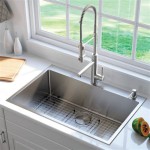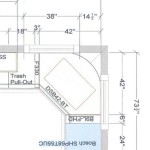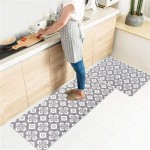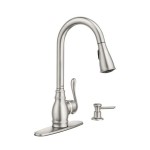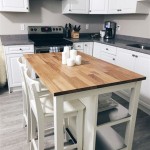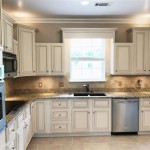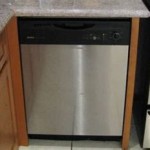Kitchen With Oven In Island: Design, Functionality, and Considerations
The kitchen island has evolved beyond a simple countertop workspace. It has become a focal point of the modern kitchen, often incorporating integrated appliances and storage solutions. Integrating an oven into a kitchen island represents a significant design choice that impacts both functionality and aesthetics. This article explores the benefits, challenges, practical considerations, and design options associated with placing an oven in a kitchen island.
An oven installed within a kitchen island fundamentally alters the kitchen's workflow. Traditionally, ovens are situated along walls, often as part of a range or as a built-in wall oven. Relocating the oven to the island changes the cook's primary working area, potentially increasing efficiency or introducing new spatial challenges depending on the layout and design.
Before committing to an oven in the island, a thorough evaluation of needs and requirements is crucial. Consider factors such as cooking habits, available space, ventilation requirements, and the overall design aesthetic of the kitchen. Failing to properly plan for these elements can result in a poorly functioning and aesthetically unappealing space.
Enhanced Workflow and Space Efficiency
One of the primary advantages of incorporating an oven into a kitchen island is the potential for improved workflow. With the oven located centrally, the cook can access ingredients and cooking tools from the island and immediately transfer them to the oven. This arrangement can reduce walking distance and promotes a more streamlined cooking process. The island also becomes a central hub, facilitating interactions with family members or guests while preparing meals.
In smaller kitchens, an oven in the island can optimize space utilization. By combining cooking, preparation, and potentially even dishwashing functions within the island footprint, the design can free up valuable wall space for storage or other appliances. This is particularly beneficial in open-concept living spaces where efficient use of available area is crucial.
The integration of other appliances, such as a cooktop or warming drawer, into the island along with the oven can further enhance efficiency. This creates a complete cooking station within the island, minimizing movement and maximizing productivity. However, careful consideration must be given to the placement and spacing of each appliance to ensure safe and comfortable usage.
The workflow benefits of an oven in the island are maximized when the island is appropriately sized and positioned within the kitchen. Insufficient countertop space around the oven can hinder preparation and plating activities. Improper placement in relation to other appliances or pathways can disrupt the flow of traffic and impede movement within the kitchen.
Ventilation and Safety Concerns
Proper ventilation is paramount when installing an oven in a kitchen island. Unlike wall-mounted ovens that can be easily vented through a nearby exterior wall, island ovens often require more complex and potentially more expensive ventilation solutions. Downdraft ventilation systems are commonly used to extract smoke, steam, and odors directly from the cooktop surface. These systems are integrated into the island and exhaust outwards or recirculate the air after filtration.
Downdraft ventilation systems are not always as effective as traditional overhead range hoods, particularly for high-heat cooking activities. They can struggle to capture rising plumes of smoke and steam, potentially leaving odors lingering in the kitchen. For those who frequently engage in high-heat cooking, a more powerful overhead range hood, strategically positioned above the island, may be a preferable option. This requires careful planning to ensure the hood does not visually overwhelm the space and that it meets all necessary building codes.
Safety is another critical concern when designing a kitchen island with an oven. The placement of the oven must take into account potential hazards, such as hot surfaces and open oven doors. Adequate clearance around the oven is essential to prevent accidental burns or collisions. Consider the height of the oven relative to the countertop and the surrounding floor area. A lower oven may be more accessible to children but can pose back strain for adults. Conversely, a higher oven can be easier for adults to use but may be less accessible for younger individuals.
Childproofing measures should be implemented to mitigate potential risks. Oven door locks and cool-touch oven doors can prevent accidental burns. Storing potentially hazardous items, such as knives and flammable materials, away from the oven is also crucial. Regular maintenance and inspection of the oven and ventilation system are necessary to ensure safe and efficient operation.
Design Considerations and Aesthetic Integration
Integrating an oven into a kitchen island requires careful attention to design and aesthetics. The oven must seamlessly blend into the overall style of the kitchen while maintaining functionality. There are numerous design options available, ranging from sleek, modern appliances to more traditional, rustic designs. Selecting an oven that complements the cabinetry, countertops, and other fixtures is crucial for achieving a cohesive and visually appealing space.
The size and configuration of the island play a significant role in the design. A larger island can accommodate a full-sized oven, while a smaller island may require a more compact model. The placement of the oven within the island can also affect the overall aesthetic. Centering the oven on the island can create a focal point, while positioning it off-center can allow for more countertop space and storage options.
Cabinetry and paneling can be used to conceal or highlight the oven. Custom cabinetry can be designed to seamlessly integrate the oven into the island, creating a built-in appearance. Decorative panels can be used to add visual interest and complement the surrounding décor. Stainless steel appliances can provide a modern, industrial look, while enamel-coated ovens can add a touch of color and personality.
Lighting is another essential element to consider. Task lighting should be positioned to illuminate the cooking surface and the surrounding area. Under-cabinet lighting can provide additional illumination and enhance the visual appeal of the island. Pendant lights or chandeliers can be used to create a focal point above the island and add a touch of elegance.
The selection of materials for the countertop and surrounding surfaces is also important. Durable, heat-resistant materials, such as granite, quartz, or stainless steel, are ideal for countertops near the oven. These materials can withstand high temperatures and are easy to clean. Backsplashes can be used to protect the walls from heat and splashes and add a decorative element to the kitchen.
Accessibility is a further design consideration. Ensure that the oven is easily accessible for users of all ages and abilities. Consider features such as pull-out shelves and adjustable oven racks to improve accessibility. Adherence to universal design principles can ensure that the kitchen is functional and comfortable for everyone.
In addition to the oven itself, consider the placement of other appliances and features within the island. A cooktop, sink, or dishwasher can be integrated into the island to create a complete cooking and cleaning station. Storage solutions, such as drawers, shelves, and cabinets, can be incorporated to maximize space utilization. Outlets and USB ports can be added to provide convenient charging stations for electronic devices.
Ultimately, the design of a kitchen island with an oven should reflect the homeowner's personal style and preferences. By carefully considering the design elements and incorporating features that enhance functionality and aesthetics, it is possible to create a beautiful and practical kitchen space that meets the needs of the entire family.
Proper planning, adherence to building codes, and professional installation are crucial for successful implementation. Consulting with a qualified kitchen designer or contractor is highly recommended to ensure that all aspects of the project are carefully considered and executed to the highest standards.
The cost of installing an oven in a kitchen island can vary depending on the complexity of the project and the materials used. Factors such as the type of oven, the ventilation system, the cabinetry, and the countertop material can all impact the overall cost. Obtaining multiple quotes from different contractors is recommended to ensure that the price is competitive and that all necessary permits are obtained.

Kitchen Island Cooktop Or Range How To Choose Kitchenaid

39 Smart Kitchen Islands With Built In Appliances Digsdigs

Kitchen Island Cooktop Design Ideas

What Appliances You Should And Not Place In A Kitchen Island

Kitchen Island Range Oven Home Decor With Stove Design

Kitchen Archives

Taupe Kitchen Island With Oven Transitional

Kitchen Islands That Work

An Overpowering Kitchen Learns To Lighten Up

Kitchen Island Inspiration Gallery See 16 Photos
See Also


